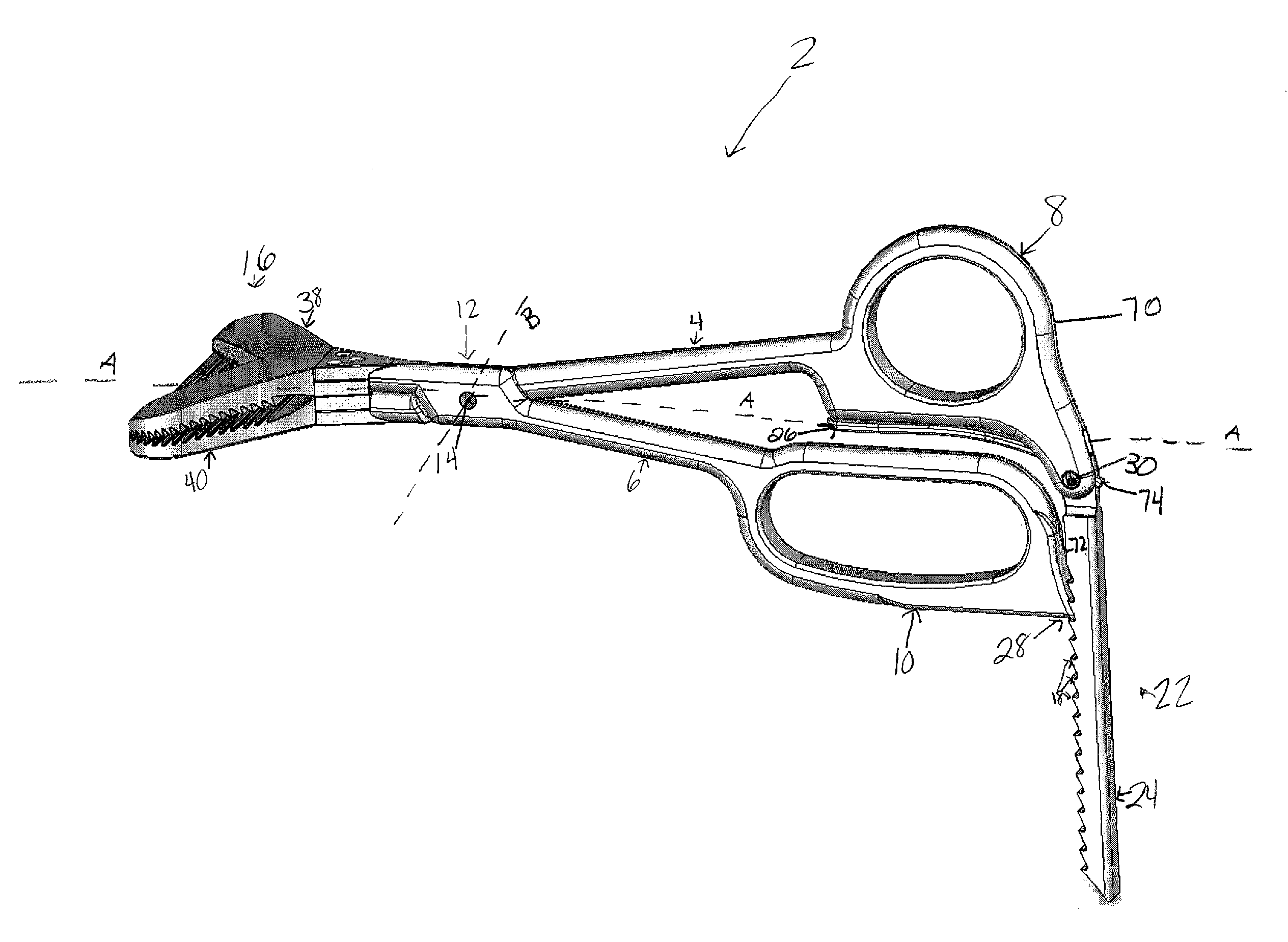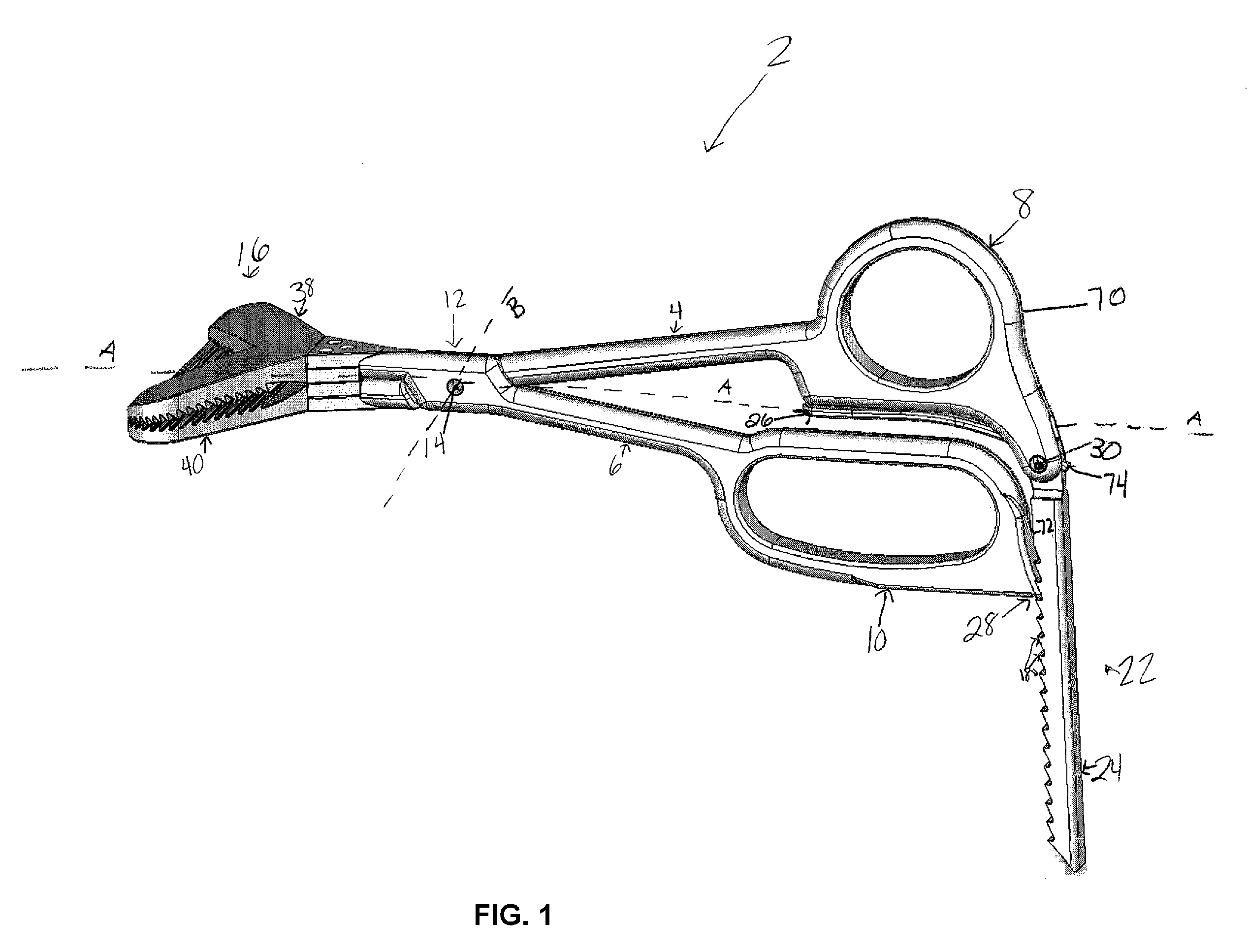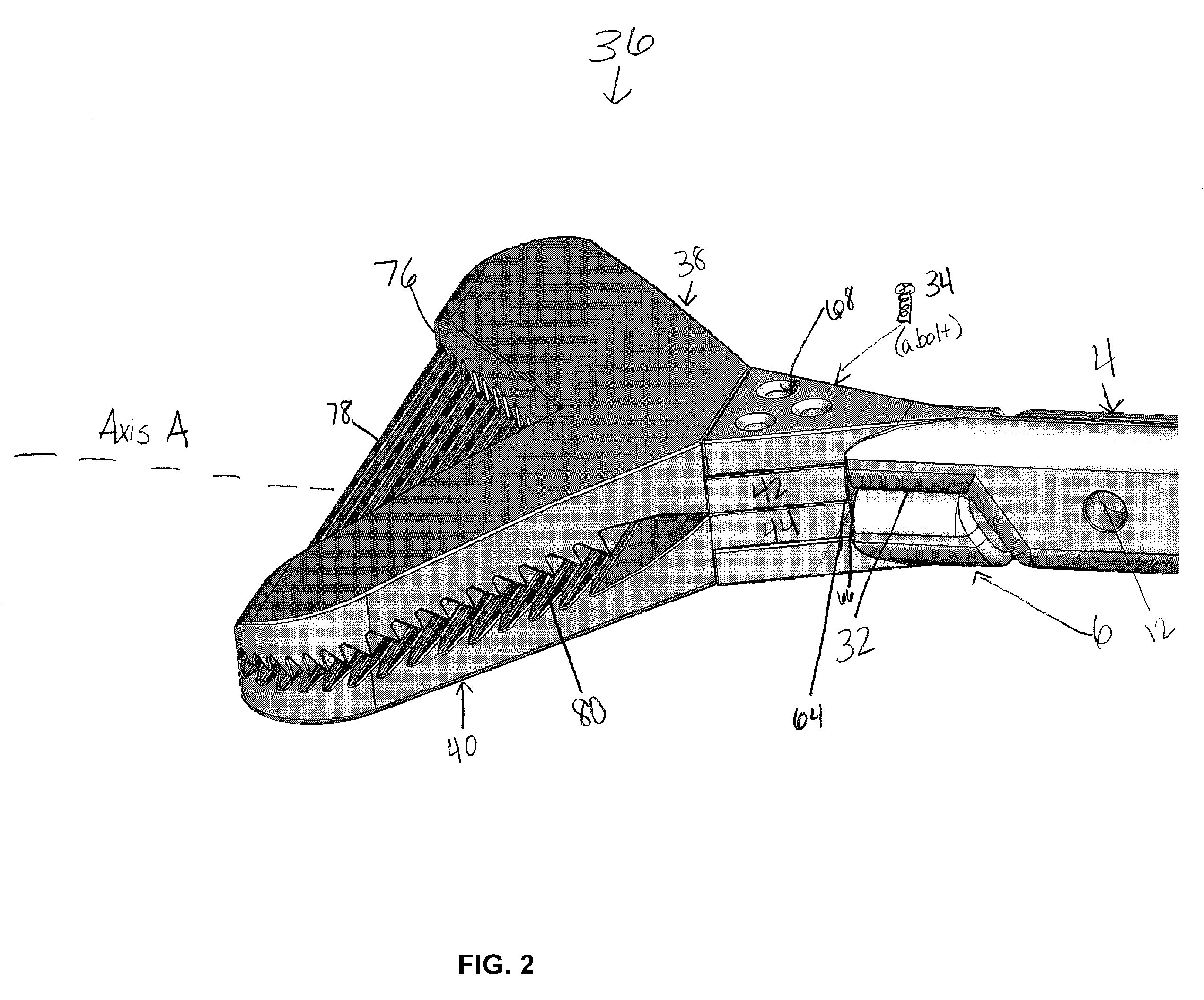Surgical bone clamp
a surgical and bone clamping technology, applied in the field of surgical bone clamps, can solve the problems of increasing the total length of surgery and the risk of complications for patients, affecting the safety of patients, and affecting the patient's recovery, so as to achieve convenient operation, simple construction, and large surface area
- Summary
- Abstract
- Description
- Claims
- Application Information
AI Technical Summary
Benefits of technology
Problems solved by technology
Method used
Image
Examples
Embodiment Construction
[0021]FIG. 1 illustrates generally a bone clamp 2 in accordance with the invention. The components of the bone clamp 2 are constructed of a suitable material that will allow for sterilization, will resist corrosion, and is of the type used for instruments of similar application, such as, for example, stainless steel.
[0022]A pair of handle arms 4 and 6 is hingedly and pivotally connected at a pivot joint 12 by a pivot pin 14. Handle arm 4 will be referred to as the first handle arm and handle arm 6 will be referred to as the second handle arm. The handle arms 4 and 6 are used to hold the device as well as manipulate the bone engaging means 16 within the surgical space. The pivot pin 14 forms an axis of rotation of the relative movement between the handle arms 4 and 6 so that the arms can pivot in a normal scissors or forceps fashion.
[0023]Finger loops 8 and 10 are provided at respective ends of handle arms 4 and 6 for transmission of a hand motion to the handle arms 4 and 6 and trans...
PUM
 Login to View More
Login to View More Abstract
Description
Claims
Application Information
 Login to View More
Login to View More - R&D
- Intellectual Property
- Life Sciences
- Materials
- Tech Scout
- Unparalleled Data Quality
- Higher Quality Content
- 60% Fewer Hallucinations
Browse by: Latest US Patents, China's latest patents, Technical Efficacy Thesaurus, Application Domain, Technology Topic, Popular Technical Reports.
© 2025 PatSnap. All rights reserved.Legal|Privacy policy|Modern Slavery Act Transparency Statement|Sitemap|About US| Contact US: help@patsnap.com



